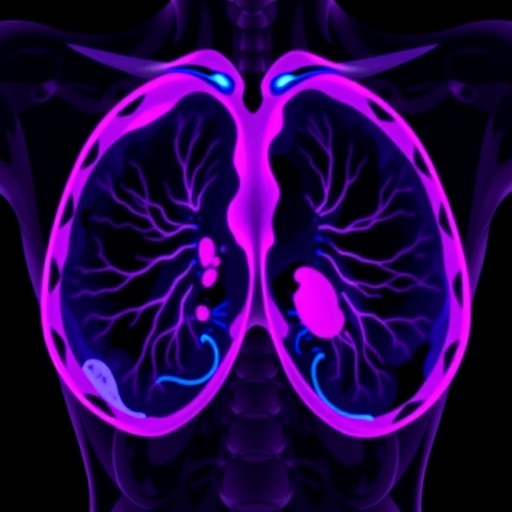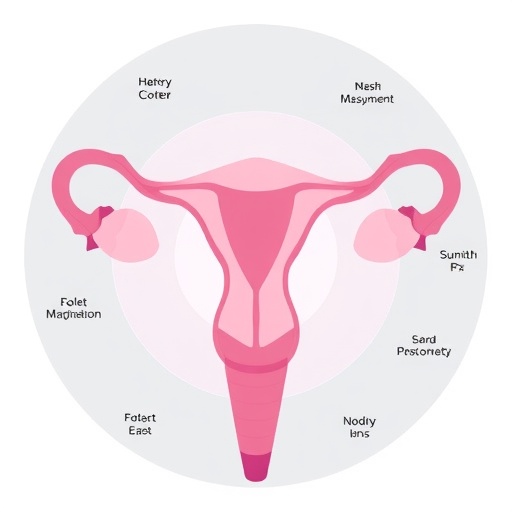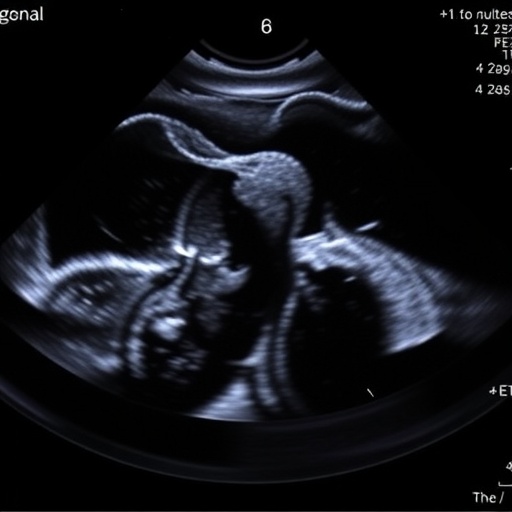A groundbreaking new study published in BMC Cancer introduces an innovative technique that promises to revolutionize breast cancer surgery by providing surgeons with real-time insights into tumour margins, potentially minimizing the need for repeat operations. This pioneering research examines stereoscopic optical palpation (SOP), a cutting-edge camera-based optical elastography method designed to detect cancerous tissues through their distinct mechanical properties.
Breast-conserving surgery (BCS) aims to excise malignant tumours while sparing as much healthy tissue as possible. The success of these procedures hinges on the precise identification of tumour margins. Failure to completely remove cancerous cells often results in re-excision surgeries, which increase patient distress and healthcare costs while potentially impacting survival outcomes. Current intraoperative margin assessment techniques, however, can be costly, time-consuming, or insufficiently accurate.
Enter stereoscopic optical palpation, an approach that leverages the biomechanical attribute of increased stiffness typically exhibited by cancerous breast tissue compared to normal tissue. By capturing pairs of high-resolution images using a specialized camera system, SOP generates three-dimensional stress maps illustrating mechanical pressure distribution on tissue surfaces. This innovative method capitalizes on differential tissue elasticity to pinpoint tumour boundaries rapidly and non-invasively.
The study conducted an extensive evaluation of SOP’s diagnostic capabilities using freshly excised breast tissue samples from 48 patients. These samples underwent immediate imaging within minutes of excision to simulate real-time surgical assistance. For each specimen, the SOP system captured stereoscopic photographs and computed stress maps that highlighted areas subjected to varying mechanical pressure across the tissue’s surface.
To rigorously validate SOP’s accuracy, researchers meticulously co-registered the generated stress maps with histopathological analyses—the gold standard for cancer diagnosis. They focused on regions of interest located within one millimeter of the tissue margins, as cancer presence within this critical boundary significantly influences surgical decision-making. These regions were randomly grouped into ten sets to facilitate robust classifier training and testing via 10-fold cross-validation, strengthening the reliability of findings.
Remarkably, histopathologic evaluation revealed that 11.3% of the analyzed margin regions harbored cancer cells. When applying the SOP technique coupled with automatic classification algorithms, the sensitivity—reflecting the true positive rate of detecting cancerous tissue—reached an impressive 82.1%. Equally notable, the specificity, indicating the accurate identification of benign tissue, stood at 83.6%. These metrics highlight SOP’s potential as a reliable intraoperative tool to distinguish malignant from non-malignant margins effectively.
A critical parameter emerging from the analysis was the mean stress threshold used to identify positive cancer margins, calculated at 10.1 kilopascals. This numerical benchmark provides a practical reference point for future applications of SOP, aiding surgeons and software systems in making definitive margin evaluations during procedures.
Beyond the quantitative results, the study underscores SOP’s inherent advantages: it offers simplicity, rapid processing, and cost-effectiveness. Unlike existing methods requiring extensive equipment or specialist intervention, SOP’s camera-based setup can integrate easily into surgical workflows. Generating detailed stress maps within two minutes post-image capture facilitates immediate feedback, supporting intraoperative decision-making without delays.
The implications of incorporating SOP into breast cancer surgery are profound. By providing accurate, real-time margin assessments, SOP may significantly reduce rates of incomplete tumour excision and the consequent need for additional surgeries. This improvement can diminish patient anxiety, reduce healthcare expenditures, and potentially enhance long-term outcomes by decreasing local recurrence rates post-BCS.
This study’s demonstration of SOP’s diagnostic feasibility represents an important step toward clinical translation. However, further investigations involving larger cohorts and diverse tumour subtypes will be necessary to confirm and refine the technology’s utility. Additionally, integration with surgical instruments or robotic systems could pave the way for fully automated, precision-guided tumour resections.
The research team’s innovative approach reflects a broader trend emphasizing biomechanical properties as valuable diagnostic biomarkers in oncology. By leveraging tumor tissue stiffness differences, researchers are opening new avenues for non-invasive cancer detection that complement traditional histopathology and molecular techniques.
As breast cancer remains one of the most prevalent cancers affecting women globally, innovations like SOP bear immense promise for improving surgical outcomes and patient quality of life. The synthesis of optical elastography with machine learning classifiers exemplifies the power of interdisciplinary collaboration, uniting physics, engineering, pathology, and clinical expertise.
The technical elegance of SOP lies in its stereoscopic imaging capability, which captures depth information unavailable to conventional 2D photography. This volumetric data enriches the mechanical stress mapping process, enhancing spatial resolution and diagnostic precision. Moreover, the rapid computational algorithms translating images into actionable maps represent an advancement in real-time medical imaging.
Looking forward, researchers envision expanding SOP’s applications beyond breast cancer. Tumour margin assessment in other solid tumors such as melanoma, pancreatic, or brain cancers could benefit from similar biomechanical profiling. The generalizability of the technique and adaptability for various surgical environments underscore its broad potential impact.
In conclusion, the diagnostic feasibility study published in BMC Cancer heralds stereoscopic optical palpation as a promising, affordable, and accurate method for intraoperative breast tumour margin assessment. By facilitating immediate, precise differentiation between malignant and benign tissues, SOP has the potential to transform breast-conserving surgeries, reducing re-excision rates and improving patient outcomes worldwide.
Subject of Research: Diagnostic feasibility of stereoscopic optical palpation for breast tumour margin assessment.
Article Title: Diagnostic feasibility study of stereoscopic optical palpation for breast tumour margin assessment.
Article References:
Fang, Q., Sanderson, R.W., Zilkens, R. et al. Diagnostic feasibility study of stereoscopic optical palpation for breast tumour margin assessment.
BMC Cancer 25, 1793 (2025). https://doi.org/10.1186/s12885-025-14871-w
Image Credits: Scienmag.com
DOI: 19 November 2025
Tags: breast cancer detection techniquesbreast-conserving surgery advancementscancerous tissue identification methodsdiagnostic capabilities of optical palpationinnovative cancer detection technologiesintraoperative margin assessment methodsmechanical properties of breast tissueminimizing re-excision surgeriesoptical elastography in surgeryreal-time tumor margin insightsstereoscopic optical palpationthree-dimensional stress mapping in surgery





